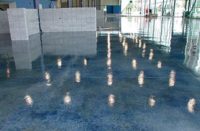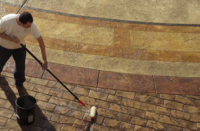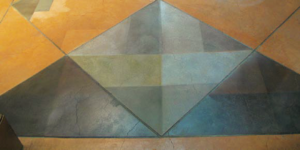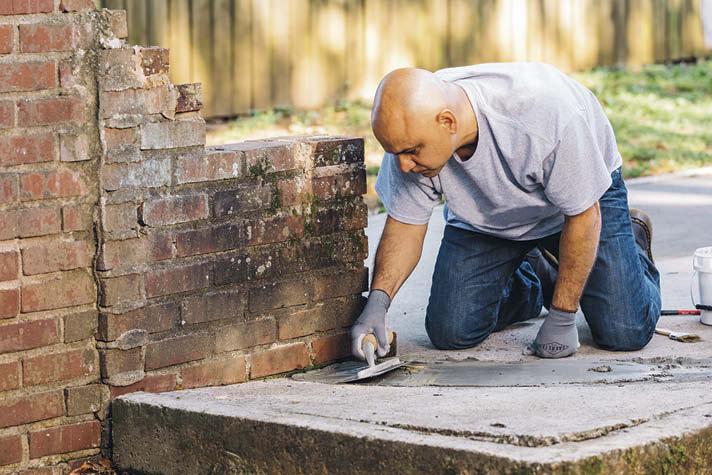
Concrete is a very durable material and some contractors and a lot of their clients believe it’s a maintenance-free product. But the reality is that no product lasts forever, not even concrete, without occasional maintenance.
Contractors know the unfortunate truth: concrete is going to crack — it’s just a matter of when. Eventually, surfaces show signs of wear and tear, which provides the opportunity to offer maintenance services to extend the concrete’s functional life. Here are tips on how to maintain your client’s concrete and firm up client relationships.
Always clean and seal concrete
Many clients think of concrete as a maintenance-free product, or that a pressure wash is all it needs. But weather, freeze-thaw cycles, acids, alkali, salt and harsh chemicals can degrade concrete over time.
A simple step toward protecting concrete against the elements is keeping concrete sealers up-to-date on their maintenance schedule. Most sealers call for reapplication every six months to a year. By keeping up with the product’s sealer maintenance schedule, contractors can follow up with clients when the time comes to encourage maintenance and reapplication. In doing so, contractors can establish a relationship with their customers. Be sure to note that sealing can cause slippery surfaces when wet.
Use a resurfacer to repair chips and cracks
Resurfacers are great products to use when it comes to concrete repairs. With the proper preparation, resurfacers can be simply applied to concrete surfaces in very thin layers. Resurfacers can bring new life to concrete surfaces and give them a nice, decorative touch.
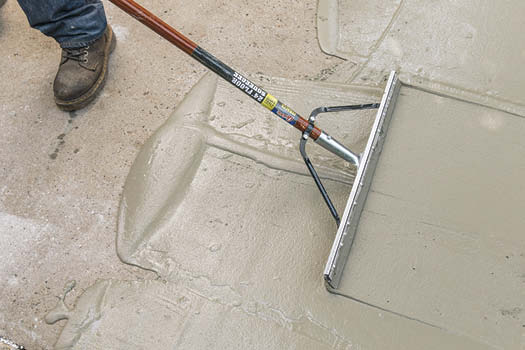
Resurfacers are great for driveways, slabs, patios walkways and more. Concrete repair materials are also great for corner repairs for damage commonly made by equipment or heavy machinery.
Once a resurfacer has been allowed to cure, reseal it according to the sealer manufacturer’s recommendation.
Be aware of harmful materials
Northern states use a lot of road salts. Salt damage is most commonly due to exposure to de-icing salts. However, any chemical compound containing chlorides presents a danger to the concrete. They are mildly acidic and attack the bonds that hold concrete together.
Salt is a mild acid and lowers the pH in concrete, which attacks the concrete paste and aggregate, weakening the structure and strength of the concrete. It also increases the pore size, allowing additional water and chemicals to permeate the concrete.
Beyond the elements, constant use, heavy machinery, corrosive fluids and poor management of surface protectants wear concrete down. You should seal any high-trafficked area to prevent damage, and if you are called to repair damaged areas, use proper repair materials and then apply a resurfacer.
Remember resealing seasons
In addition to following the sealer’s application schedule, contractors can help clients identify the best time to seal their concrete. For instance, springtime is a very popular time for home renovations. After all those projects have been completed (when all the trucks and machinery have left the driveway) is a great time to approach clients with concrete sealing and maintenance recommendations.
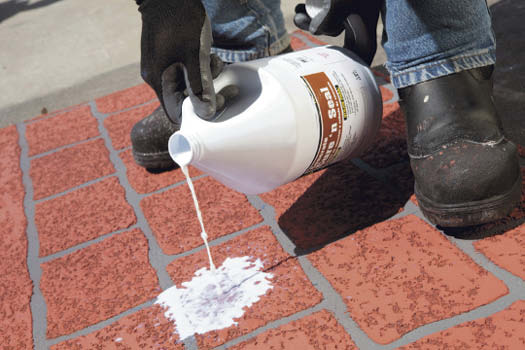
Another great time to start a concrete resealing project comes when homeowners are winterizing their homes. With winter comes ice and salt which can both harm concrete surfaces. This is an ideal time to reseal and prepare concrete for these harsh conditions.
Contractors should also inform clients that they can tint concrete sealers to give the concrete an attractive color, an upgrade that’s becoming increasingly popular. This can improve curb appeal or enhance outdoor entertaining.
Try a simple sealer test
Not all homeowners will be well versed on their homes concrete’s installation and sealing history. When that’s the case, contractors can perform a simple sealer test to determine whether or not concrete surfaces need sealant applied.
To test if concrete is sealed, pour a small amount of water onto the surface. If the water beads up, and the color of the concrete doesn’t change, the concrete is sealed. If the concrete absorbs the water and darkens, no sealer is present.
Regularly follow up with clients
Most clients and homeowners don’t know all that goes into concrete maintenance. By following up with clients and building relationships through transparency about pricing, timing and expectations, contractors can create additional business opportunities for their company.
Reach out to clients every six to nine months via email, direct mailers or on the phone. Remind them to check their concrete surfaces for cracks and chips, their sealer performance or any other potential wear and tear.
By continuing minor maintenance throughout the life of your clients’ concrete, you can extend the concrete’s aesthetic appeal and functionality. As a contractor, you can showcase your expertise to your clients by continuing to check in with them and providing advice on how to keep their concrete in top shape. With these continued touch points, you are sure to turn your one-time customers into repeat customers.
